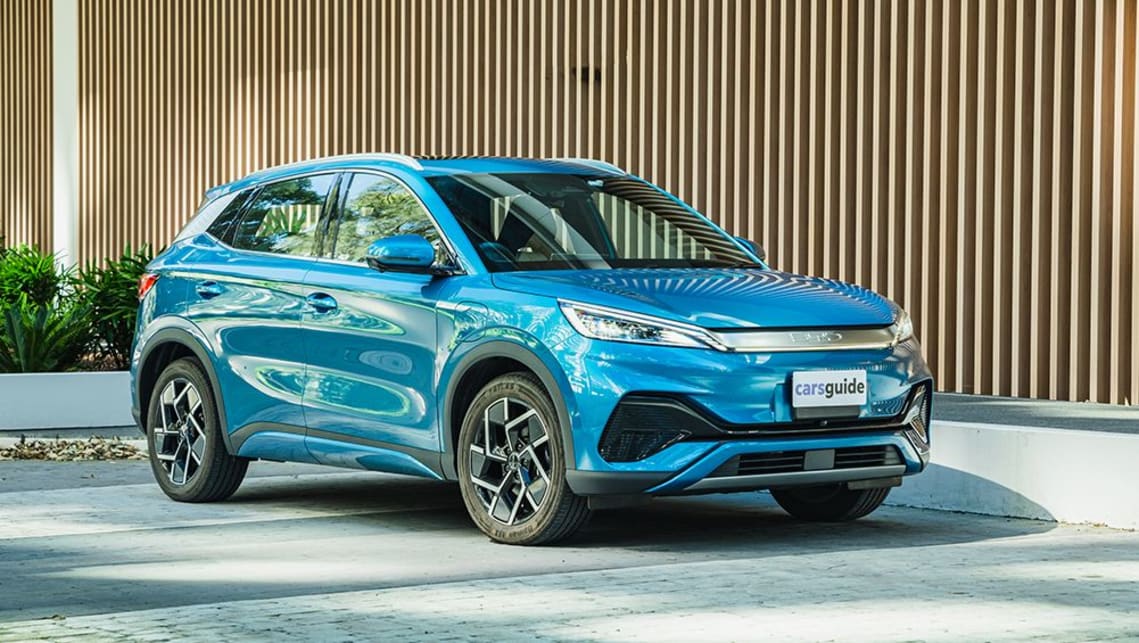Challenges For Premium Automakers In China: BMW, Porsche, And Beyond

Table of Contents
Intense Domestic Competition
The rise of domestic Chinese luxury brands like Nio, Xpeng, and Li Auto poses a significant challenge to established premium automakers in China. These new entrants are not just disrupting the market; they are aggressively reshaping it. Their impact is felt across various aspects of the industry:
-
Aggressive pricing strategies from domestic brands: Domestic brands often undercut established players on price, making luxury vehicles more accessible to a wider segment of the Chinese population. This price competitiveness directly impacts the sales volume and profitability of foreign brands.
-
Rapid technological advancements and innovation from Chinese competitors: Chinese manufacturers are rapidly innovating, particularly in the electric vehicle (EV) sector, offering cutting-edge features and technologies that compete directly with, and sometimes surpass, those offered by established global brands. This rapid technological advancement keeps the competition fierce and requires continuous innovation from foreign players.
-
Strong brand loyalty among Chinese consumers towards domestic brands: A growing segment of Chinese consumers demonstrate a strong preference for domestically produced vehicles, fueled by patriotism and a belief in supporting local industries. This loyalty presents a formidable hurdle for foreign brands to overcome.
-
Government support and incentives for local auto manufacturers: The Chinese government actively supports the growth of domestic automakers through various subsidies, tax breaks, and favorable policies, creating an uneven playing field for foreign brands. This governmental support provides a significant advantage to domestic competitors.
The rise of electric vehicles (EVs) further intensifies this competition. China is a global leader in EV adoption, and domestic brands are at the forefront of this revolution, leveraging advanced battery technologies and sophisticated charging infrastructure to gain a significant market share. This rapid shift to EVs requires premium automakers to rapidly adapt and invest heavily in their EV offerings to remain competitive.
Evolving Consumer Preferences
Understanding the shifting tastes and preferences of Chinese luxury car buyers is crucial for success. These consumers are increasingly tech-savvy and demand personalized experiences:
-
Demand for advanced driver-assistance systems (ADAS) and autonomous driving features: Chinese luxury car buyers prioritize advanced safety and convenience features, including ADAS and autonomous driving capabilities. Falling behind in this technological race can significantly impact brand appeal.
-
Preference for digitalization and connectivity features within the vehicles: Connectivity and seamless integration with mobile devices are key considerations. Vehicles that offer sophisticated infotainment systems and connected services are significantly more desirable.
-
Growing importance of brand image and social status associated with car ownership: While luxury remains a key factor, the associated image and social status play a significant role in purchasing decisions. This nuanced understanding of consumer aspirations is key to targeted marketing efforts.
-
Focus on environmentally friendly vehicles, including hybrids and EVs: Environmental consciousness is growing among Chinese consumers, leading to increased demand for hybrid and electric vehicles. Brands that offer sustainable options are better positioned for growth.
These preferences are influencing design, features, and marketing strategies. Premium car brands are increasingly focusing on customization options, enhancing digital experiences, and showcasing their commitment to sustainability to cater to this evolving market.
Regulatory and Infrastructure Challenges
Navigating the Chinese regulatory landscape presents numerous complexities for premium automakers in China:
-
Strict emission standards and regulations impacting vehicle production and sales: Meeting stringent emission standards requires significant investment in research and development and can significantly impact production costs.
-
High import tariffs and taxes increasing the cost of foreign vehicles: High import duties inflate the price of foreign vehicles, making them less competitive compared to domestically produced cars.
-
Varying infrastructure and charging networks for EVs across different regions of China: The uneven development of charging infrastructure across China poses a challenge for EV adoption, requiring strategic planning for sales and service networks.
-
Navigating complex bureaucratic processes and obtaining necessary permits: The bureaucratic processes involved in obtaining necessary permits and approvals can be time-consuming and complex, potentially delaying market entry and expansion.
These challenges directly impact profitability and market access. Understanding and proactively addressing these regulatory hurdles is critical for long-term success.
Supply Chain Disruptions
Global supply chain issues exacerbate the challenges faced by premium automakers in China:
-
Microchip shortages and their impact on vehicle production: The global shortage of microchips has significantly impacted vehicle production globally, including China, leading to production delays and unmet demand.
-
Disruptions in the global supply chain affecting the delivery of parts: Disruptions in global shipping and logistics have further compounded the challenges, delaying the delivery of essential components.
-
Increased costs associated with sourcing components globally: The disruptions have led to increased costs for sourcing components, impacting overall profitability.
These disruptions affect production timelines and market competitiveness. Robust supply chain management and diversification strategies are crucial to mitigate these risks.
Conclusion
The Chinese market offers immense potential for premium automakers, but the challenges are substantial. Successfully navigating the intense domestic competition, evolving consumer preferences, and complex regulatory environment requires a nuanced understanding of the market and agile adaptation. Premium automakers in China must embrace localization strategies, invest heavily in R&D, particularly in EV technologies and digital features, and build strong relationships with both consumers and the government. Failure to adapt to these challenges will significantly hinder success. To maintain a competitive edge in this dynamic market, strategic planning and a deep understanding of the evolving landscape of premium automakers in China is crucial. Investing in understanding these challenges is the first step toward success in this vital market.

Featured Posts
-
 Saudi Aramco And Byd A New Ev Technology Partnership
Apr 22, 2025
Saudi Aramco And Byd A New Ev Technology Partnership
Apr 22, 2025 -
 Ftc Probe Into Open Ai And Chat Gpt A Deep Dive
Apr 22, 2025
Ftc Probe Into Open Ai And Chat Gpt A Deep Dive
Apr 22, 2025 -
 Broadcoms Proposed V Mware Price Hike A 1 050 Increase For At And T
Apr 22, 2025
Broadcoms Proposed V Mware Price Hike A 1 050 Increase For At And T
Apr 22, 2025 -
 Pope Francis Passes Away At 88 Reflecting On His Papacy
Apr 22, 2025
Pope Francis Passes Away At 88 Reflecting On His Papacy
Apr 22, 2025 -
 American Protests Examining The Anti Trump Movement
Apr 22, 2025
American Protests Examining The Anti Trump Movement
Apr 22, 2025
